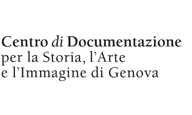An extraordinary collection of images, made up of thousands of different pieces for matter and technique - papers, engravings, drawings, watercolors, paintings - but all illustrating the different aspects of the Genoese and Ligurian urban, architectural, artistic life.
Strictly technical documents, such as city maps, planning for new streets or monuments and building restoration, coexist with seventeenth and eighteenth-century views and nineteenth-century panoramas and urban views.
Among the most famous and fundamental works to know the urban development, we remember the following: "Plan of Genoa inside the old walls, outlined in 1656 and commissioned by the Municipality Fathers"; the large watercolor ink drawing by Giacomo Brusco which represents the map of the city in 1785 (exposed in the Museo di Sant'Agostino for its monumental dimension); the maps of the Napoleonic era; the clear views of the eighteenth century inspired by the Enlightment period by the engraver Gianlorenzo Guidotti after the invention of Antonio Giolfi; the watercolors by Luigi Garibbo or Pasquale Domenico Cambiaso, surrounded by romantic sensitivity.
The beginning of the collection dates back to the last decades of the nineteenth century, when it was necessary to preserve the memory, even visual memory, of the rapid urban changes; the collection was continuously increased, by Orlando Grosso, throughout the first half of the twentieth century, thanks to donations but, above all, to a constant purchasing policy (as the acquisition of around 700 drawings, plans and projects by Carlo Barabino, first civic architect) and direct commissions to artists. Particularly significant is the donation of Edward Berry's cartographic collection to the Municipality of Genoa, after his death, by his wife Margaret in 1931. The collections boast a digitized inventory according to ministerial regulations, for 4760 pieces out of about 7000.




